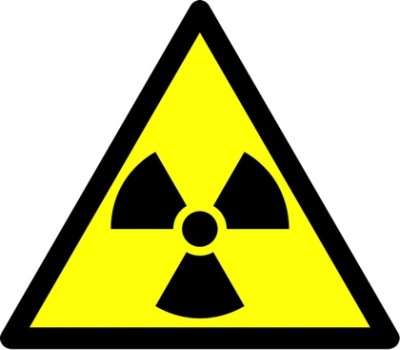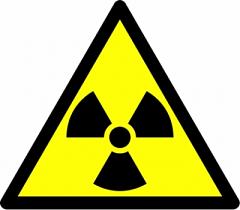U.S. uses Nuclear Waste for Food Irradiation
SOON MORE THAN 90 PERCENT of the average American's diet could be eligible for irradiation. But government approval of this technology has been based on heavy industry pressure and bad science. As a result, the consumer has been made a guinea pig, testing these foods and facing potential health risks. Meanwhile leaks from irradiation facilities pose significant risks to public health and to the environment.
The corporate purveyors and beneficiaries of an increasingly contaminated world food supply are not only destroying indigenous and sustainable forms of agriculture, but are also propagating a destructive myth that agricultural problems largely created by issues of scale and an addiction to toxic technologies can be solved by more of the same. And perhaps nowhere is this phenomenon more obvious than in the new push to promote and implement the nuclear food irradiation technology as a so-called solution to a contaminated industrial food supply. Instead of addressing the known industrial causes of food contamination, irradiation proponents are, in effect, proposing to bathe the food supply in radiation as an alternative to preventing the contamination in the first place.
Beginning in 1986, the U.S. Food and Drug Administration (FDA) gave a series of green lights that have led to the possibility that the vast majority of our food supply will be exposed to nuclear irradiation. The agency has made separate decisions legalizing the use of irradiation for fruit, vegetables, and spices (in 1986); poultry (in 1990); beef, pork, lamb, and horse (in 1997); and fresh shell eggs (in 2000). The FDA is currently considering expanding the use of irradiation to shellfish, unrefrigerated meat, and alfalfa and other sprouting seed. If these are approved it will mean that 90 percent of the average American's diet will be eligible for irradiation.
Staunch citizen opposition is still keeping the technology out of widespread use. However, events such as the E. coli-contaminated hamburger recalls, and incidences of contamination in imported fruits and vegetables have breathed new life into the struggling industry, as government regulators and corporate food interests aggressively promote food irradiation. As a result, the meat industry in certain locations is using the technology. Today, somewhere in the United States someone is biting into a hamburger that has been irradiated with the equivalent of 150 million chest X rays (perhaps garnished with a spice that has been "treated" with the equivalent of one billion chest X rays). Despite the hype, it is clear that irradiation does not in fact deal with the real and preventable causes of industrial food contaminants such as inhumane factory farming practices, corporate food monopolies with a single-minded fixation on profit, dramatic cutbacks in federal food safety inspectors, dangerous processing and slaughtering facilities, and a citizenry increasingly disconnected from local, sustainable food sources.
Food irradiation was the brainchild of the U.S. Atomic Energy Commission (AEC), now the Department of Energy (DOE), when, in the early 1950s, it became apparent that nuclear waste from military weapons production was (as it still is) a major problem. As a result, President Dwight Eisenhower initiated the AEC's "Atoms for Peace" program designed to create "peaceful uses" for nuclear technologies and nuclear waste products such as cesium137, one of the most abundant isotopes in the waste from nuclear weapons production. And the DOE has never been shy about articulating its desire to create a commercial need for its cesium-137 waste through the promotion of food irradiation. Consider this 1983 congressional testimony from the DOE's Office of Defense Waste and Byproducts Management:
The strategy being pursued by DOE's Byproducts Utilization Program is designed to transfer federally developed cesium-137 irradiation technology to the commercial sector as rapidly and successfully as possible. The measure of success will be the degree to which this technology is implemented industrially and the subsequent demand created for cesium-137.
In addition to cesium-137, other methods of food irradiation include the use of radioactive cobalt-60 and high-energy electron beams, also known as linear accelerators. On average, when food is irradiated commercially, the food receives a radiation dose equivalent to tens of millions of chest X rays, more than enough to break up the molecular structure of the food, destroy essential vitamins and minerals, and create a host of new chemical substances known as radiolytic products. Some of these, such as benzene and formaldehyde, are harmful to human health. Benzene, for example, is a known carcinogen. Other radiolytic products, identified as "unique radiolytic products," are completely new chemicals that have not even been identified, let alone tested for toxicity.
In 1982, the FDA reviewed 441 toxicity studies to determine the safety of irradiated foods. Dr. Marcia van Gemert, the chairperson of the committee in charge of investigating the studies, has testified that all 441 studies were flawed. But in 1986, the FDA, led by political appointees, approved a number of food irradiation applications by declaring that five of the 441 studies were "properly conducted, fully adequate by 1980 toxicology standards, and able to stand alone in the support of safety." Thus, with the shaky assurances of just five studies, the FDA approved irradiation for the public food supply.
To make matters worse, the Department of Preventive Medicine and Community Health of the New Jersey Medical School has found two of those five studies to be methodologically flawed. In a third study, animals eating a diet of irradiated food experienced weight loss and miscarriage, almost certainly due to irradiation-induced vitamin E dietary deficiency. The remaining two studies investigated the effects of diets of foods irradiated at doses below the FDA-approved levels.
Irradiation facilities also pose serious worker-safety, public-health, and ecological threats due to potential radiation leaks, equipment failure, and the production, transportation, storage, installation, and replacement of radiation sources. The U.S. Nuclear Regulatory Commission (NRC) and its state equivalents have recorded dozens of cases of nuclear mishaps, accidents, and administrative negligence at the relatively few irradiation facilities that currently exist in the United States today. To irradiate the food supply on a mass scale, hundreds of irradiation facilities would need to be built, thus dramatically increasing the likelihood of accidents.
In 1988, in what has been called the, "Three Mile Island of irradiation," Radiation Sterilizers, Inc. (RSI), in Decatur, Georgia, reported a leak of its cesium-137 capsules into the water storage pool, endangering workers and contaminating the facility. Workers then carried the radioactivity into their homes and cars. Cleanup costs exceeded $45 million and taxpayers footed the bill.
In 1986, the NRC revoked the license of a Radiation Technology, Inc. (RTI) facility in New Jersey for having 32 worker-safety violations, including throwing radioactive garbage out with the regular trash and bypassing a key safety device. As a result of this negligence, RTI's founder and chairman, Martin Welt, was eventually indicted and convicted on felony counts of misleading the NRC and filing false nuclear safety reports.
As a result of the numerous health and ecological threats, coupled with spirited grassroots initiatives, the irradiation industry has faced an uphill battle in its efforts to convince the public to embrace its risky technology. But the once emaciated industry is now being resuscitated by a wave of new government- and corporate-sponsored public relations initiatives that are seeking to "train" the public about the supposed benefits of food irradiation. In addition to the steady stream of dubious claims of safety and simplicity, irradiation proponents are working hard to confuse the public by lobbying Congress and petitioning the FDA to change the labeling of irradiated foods. Current regulations require that irradiated foods bear the label "Treated by Irradiation." Under pressure from the industry and Congress, FDA is considering changing the labeling to a misleading, and therefore less alarming, term for the technology, such as "cold pasteurization."
While such underhanded public relations stunts may make it more difficult for the public to recognize and avoid irradiated foods in the marketplace, one poll after another still indicates that citizens remain extremely distrustful of food irradiation. Putting an end to the irradiation madness will require a continued and tenacious grassroots presence that galvanizes citizen opposition to the technology and seeks to hold wholesale and retail food corporations accountable. But the ultimate nail in the food irradiation coffin will come as a result of a citizenry and culture that turns its back on industrial food and the false and dangerous technological gimmicks, like food irradiation, that continuously prop it up.
Internet site reference: http://www.mindfully.org
Comments
There are 0 comments on this post













